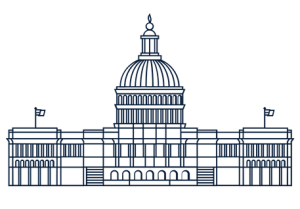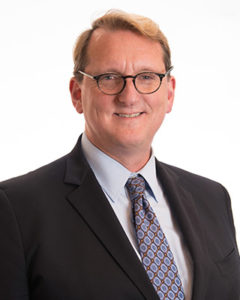Greetings NAGDCA Membership!
Hope everyone is enjoying the summer months, although flying by quickly!
The 40th NAGDCA Annual Conference is upon us and I am excited to see everyone September 8 – 11, 2019 in New Orleans! As in previous years, the annual conference is the best opportunity to receive education on the latest trends and best practices, and to network with your plan and industry peers. If you have not already registered, please do so soon and see you in a month!
The membership has spoken and has elected Kelly Hiers and Darlene Malaney as our 2 new Members-at-Large. Steve Toole, Vice President, had recently departed his position and the board voted to fill the vacancy by advancing other board members two positions forward and providing one and two-year member-at-large positions to be filled as follows:
- Kelly Hiers, Commonwealth of Virginia – Member-at-Large, 2-year term
- Darlene Malaney, Palm Beach County – Member-at-Large, 1-year term
Congratulations to Kelly & Darlene!
In staffing news, Matthew Peterson, who has been serving in an Executive Advisor role to the board for the past two years has transitioned to full employee status as NAGDCA’s official Executive Director. Matt, with the assistance of our wonderful resources at AMR, will continue to support the executive board in securing the association’s financial stability, progressing the strategic plan, membership enhancement and more.
 Sincerely,
Sincerely,
Cindy Rehmeier, NAGDCA President
Manager of Defined Contribution Plans
Missouri State Employees’ Retirement System
Retirement Bills Remain on the To-Do List as Congress Heads Home for August

Before leaving town for the traditional August recess, the Senate was unable to clear the popular House-passed retirement bill, the SECURE Act (H.R. 1994), despite widespread bi-partisan support. Senators did reach agreement with the House and the Administration to address two of the toughest items before it: easing the statutory budget caps for defense and non-defense spending and raising the national debt limit. These actions clear the way for appropriations bills to be taken up in September.
When Congress returns after Labor Day it will have only three weeks to pass all twelve detailed appropriations bills before the end of the fiscal year, September 30, or risk a government shutdown. This dynamic may create an opening for action on the SECURE Act. While some of the appropriations bills may make it over the finish line before the deadline, Congress almost certainly will need to pass one or more short term extensions, or continuing resolutions (CRs), to avoid shutting down those parts of the government whose funding expires at the end of the fiscal year. Leadership could attach the SECURE Act to “must pass” legislation like a CR to get it over the finish line. Or leaders could still succeed in satisfying the demands of the senators objecting to the bill being agreed to by unanimous consent. Stay tuned!
As we reported in May Senators Rob Portman (R-Ohio) and Ben Cardin (D-Md.) introduced the Retirement Security and Savings Act (S. 1431), which includes a number of NAGDCA federal legislative priorities. For now, this bill and other retirement matters are waiting for other issues that the Finance Committee has on its agenda.
On the House side, before leaving for August, the Ways and Means Committee moved on to other retirement security related measures, including legislation to address troubled multiemployer pensions and to shore up Social Security. Both bills were agreed to on largely party lines and would be unlikely to be taken up by the Senate in their present forms.
For the latest on these issues and other developments, join me for the Washington Update on Monday, September 9 at the NAGDCA Annual Conference in New Orleans. NAGDCA President and Legislative Committee Chair, Cindy Rehmeier will moderate a conversation with NASRA Director of Federal Relations, Jeannine Markoe Raymond; Empower Retirement Senior Director of Regulatory Affairs for Government Markets, Marilyn Collister and me, your NAGDCA Director of Government Affairs, for a look at what is happening in Washington that could impact your plans and your participants.
 Paul Beddoe
Paul BeddoeCash Holdings in Self-Directed Brokerage Accounts – A Suggestion for Plan Sponsors
by David R. Sedlak, Esq.*
A self-directed brokerage account (SDBA) is a popular investment option for plan sponsors to provide to its participants. The SDBA provides participants who want more investment options with flexibility to invest retirement contributions in different products, including various mutual funds and exchange traded funds. Plan sponsors are able to provide participants with access to thousands of investment options normally too untenable (and otherwise unwieldy) to be offered as core investment options.
The US Department of Labor (DOL) has provided little guidance for monitoring SDBAs. Provided that the SDBA is populated with various investment options, nothing requires plan sponsors to “look under the hood” of the SDBA for the practicality of those investment options to its participants. Despite the lack of federal guidance, I believe circumstances and general fiduciary responsibilities prompt plan sponsors to consider action regarding those accounts.
A recent article in USA Today by author Erin Lowry entitled “Millennials, you’ve got this all wrong. You need to stop ‘saving’ for retirement,” highlights a concern for participants. Lowry’s research concluded the study subjects mistakenly believed that “saving” for retirement is equivalent to “investing” for retirement. This mistaken belief led study subjects to make contributions to their 401(k) plan without choosing investment options for the contributions.
Congress passed the Pension Protection Act of 2006 which recommended a safe harbor for plans in the form of a Qualified Default Investment Alternative (QDIA) for ERISA plans and a default investment option for non-ERISA plans.¹ The QDIA identifies a particular investment direction for retirement savings when no direction is provided by the participants themselves. If a sponsor does not provide a QDIA, they may face fiduciary liability when a participant fails to direct contributions into an investment. Establishing and monitoring the QDIA allows plan sponsors safe harbor relief from fiduciary and legal responsibilities.
Since the QDIA does not apply to voluntary elections, participants who elect to use the SDBA may encounter situations as described by Lowry. No allocation is ever made to a SDBA except for participant transfers of assets from core investment options to those accounts, meaning it is assumed participants are actively managing their account. SDBA cash accounts can contain thousands of dollars, or even 100% of a participant’s invested amounts. These dollars are not invested in a CD fund or a money market fund, but instead sit in a temporary transitory account waiting to be invested. With the availability of safe money market funds or CD funds to the participant, having money in the SDBA cash account earning a minimal return is the virtual equivalent to hiding cash under a mattress instead of placing that cash in a bank to earn interest.
Legitimate reasons do exist why participants may leave some money in this cash account, as it is the primary staging area within the SDBA window for participants to make investment choices. For example, money transferred from the plan sponsor to the SDBAs and vice versa first moves into this cash account. Participants could still be researching the most appropriate investment option for themselves within the SDBAs before making a final choice. Any investment option dividends not directed for reinvestment also reside in the cash account.
Although these reasons are valid, there may be other reasons money is in an SDBA cash account. Could it be an example of the phenomenon Lowry discussed where participants believe simply moving money into the SDBA is an actual investment selection? Did the participants transfer retirement money from another plan but failed to direct it for investment? Did the participants select an investment and fail to take the necessary steps to finalize the transaction? No matter what the reasons why participant money remains uninvested in a cash account for so long, the problem exists and should be addressed.
While the above discussed rules governing QDIAs would not apply to SDBAs, as the SDBA is a free election by participants, it seems plan sponsors may want to take an active role in these situations. As fiduciaries, plan sponsors are tasked to ensure that participants have adequate investment options for retirement funds and to monitor these funds for their continued suitability. This, however, is not to suggest that plan sponsors must establish the equivalent of a QDIA within the brokerage window. Although doing so addresses the general issue, it may go beyond the responsibilities as plan administrators (so long as the participants voluntarily moved money into the SDBA). However, plan administrators can implement prudent steps to protect participants from unintended mistakes.
To accomplish this goal, and consistent with their fiduciary responsibility, plan sponsors’ monitoring should also include a periodic review of the cash accounts of the SDBAs to note individuals with high (more than 50% of their money), static balances (no changes to the balance, other than minimal interest increases, for more than six months) in their SDBA cash accounts. An annual notice to these participants in plan programs to alert individuals that their retirement funds are not currently invested is a good first step. The annual notice should be a targeted mailing to those participants advising them that: 1) the cash account is not intended as an investment option and cash-like investment options are available within the SDBA platform, and 2) the investment options within the primary plan’s investment window and the myriad investment options within the SDBA are still available for selection by the participant. If the participant still chooses to have a high, static balance in their account, that becomes an informed choice of the participant as opposed to a possible mistaken belief.
Beyond directly informing participants of high, static balances, the SDBA literature plans provide to participants should clarify that simply transferring money into the SDBA does not invest the money in any investment fund, and participants should make a further selection in the SDBA platform in order to do so. Additionally, the SDBA literature that plans provide to participants should note that putting money in the cash account is not a viable long-term investment option. These two additional actions also serve to put participants on notice that simply choosing an SDBA is not enough of an investment decision and that a further step must be taken.
As long as plan sponsors provide participants with investment options pursuant to regulations and monitor those options, the fiduciary responsibility to participants is fulfilled. Although plan sponsors are not responsible for the suitability of any individual investment choice a participant eventually makes, plan sponsors should embrace an inherent responsibility to address participants’ potential errors when obvious. Plan sponsors should be reviewing the SDBAs, notifying participants of any failure to actually invest those assets and encouraging them to take whatever action they feel is appropriate for their particular retirement needs and goals.
*David Sedlak is current Director of Defined Contribution Programs for the Commonwealth of Pennsylvania State Employees Retirement System (SERS). Before serving in that capacity, he was counsel to SERS for 13 years, focusing on contracts and the SERS defined contribution programs.
The thoughts and opinions expressed in this material are the authors’ and not necessarily those of the Commonwealth of Pennsylvania State Employees Retirement System (SERS), the SERS Board, the SERS Defined Contribution Plans or the Commonwealth of Pennsylvania. The statements and conclusions in this material do not constitute legal advice and do not create an attorney-client relationship between the authors and any reader. They are not binding on the Commonwealth and its agencies, officers and employees and do not alter the law of the Commonwealth. In the event of a conflict between the material contained in this document and the applicable law, regulation, or administrative policy, then the law, regulation, or administrative policy is controlling.
Commonwealth employees who have questions about employee rights and obligations under the State Employees’ Retirement Code should contact SERS. Questions about other benefits should be directed to the administrators of those benefits.
¹ For ease of discussion on this article, QDIA will refer to both an official QDIA under ERISA and a default investment option for non-ERISA plans. Different specific regulations apply to each, but the same fiduciary principles apply to both.
Click here to download the article.
2019 Annual Conference
NAGDCA’s 40th Annual Conference is a little over a month away! Check out the conference website to learn about sessions, speakers and events. Keep your eye out in the next couple weeks for details about the release of the conference mobile app – your one stop shop for all things #NAGDCA19.
Save the date! NRSW – October 20-26, 2019
NRSW is an opportunity to increase awareness and educate employees about the importance of saving for retirement by investing in an employer-sponsored defined contribution plan. Now is the time to start strategizing and planning for how your plan will promote the week. Click here to visit the NRSW web page for a suggested timeline to help with planning leading up to the week.
